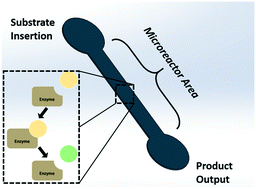Recent developments in microreactor technology for biocatalysis applications
Abstract
Biocatalytic processes are amongst the most cost efficient and sustainable methods of production of high-value biological compounds, as well as several chemical commodities. These enzyme-based processes require lengthy optimization studies that can become extremly costly due to the amount of the catalyst required for a thorough testing of a wide array of working conditions. Microfluidics technology, which enables the manipulation of liquids in the range from a few nL to μL, presents itself as an interesting alternative to traditional optimization sequences. By using microfluidics, one can drastically reduce the amount of enzyme used per working condition tested, which will drive down the cost of optimization. Besides this, microfluidics technology allows for a high degree of parallelization which enables the testing of a wide variety of process conditions in a short time frame when compared to traditional approaches such as well plate technology. In this review article, we aim to clarify some basic definitions concerning the use of microfluidics technology, while providing examples of multiple approaches, with varying degrees of complexity, being used throughout the world. It is our intent to demonstrate not only the usefulness of these devices for the improvement of industrial processing, but also to show our colleagues the advantages of implementing this type of technology in academic research labs across the globe.



 Please wait while we load your content...
Please wait while we load your content...